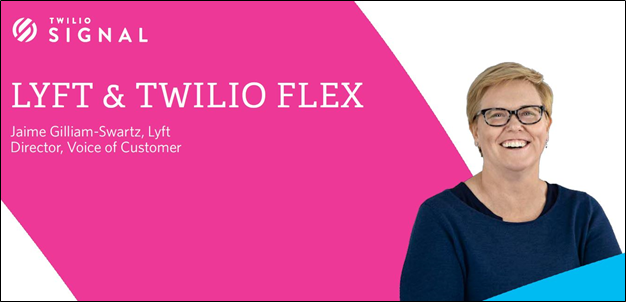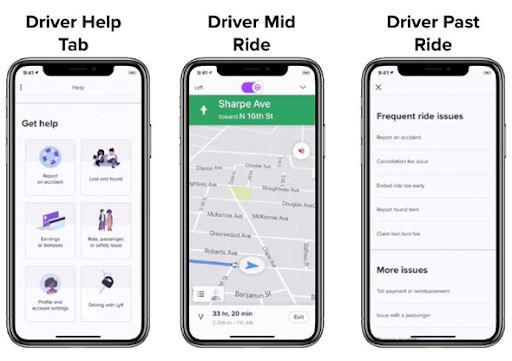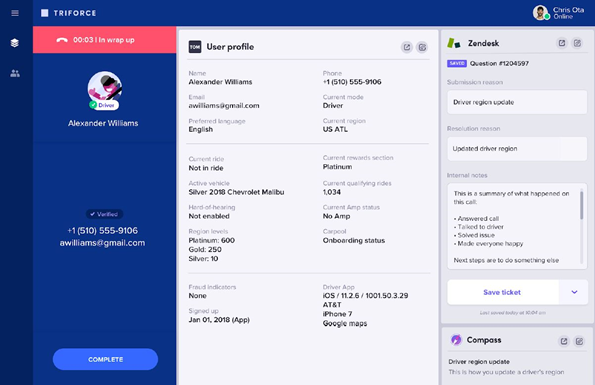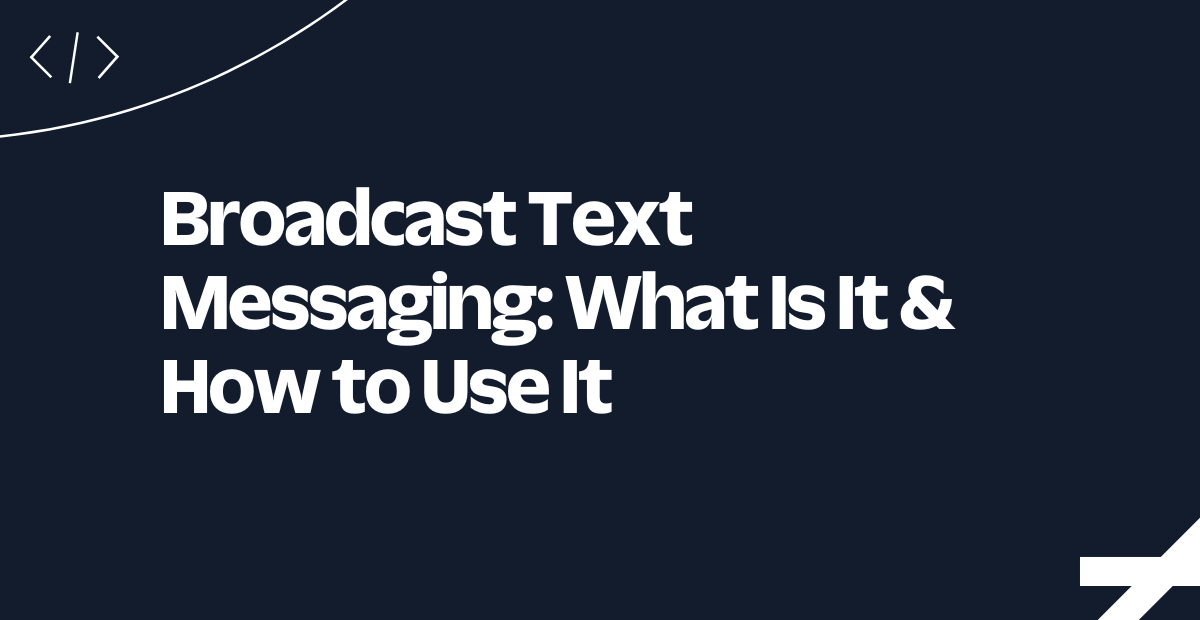How Lyft is Driving Growth with Twilio Flex
Time to read:

We built Twilio Flex to help companies focus their development resources on improving the customer experience rather than spending cycles on deploying and maintaining complex communications infrastructure.
One innovative business that’s chosen to deploy their contact center with Flex so they can focus on their customer experience is Lyft.
Jaime Gilliam-Swartz, Lyft’s VP of Customer Experience and Trust Operations, shared at SIGNAL that not long ago, the rideshare company was still relying on their original infrastructure of toll-free phone numbers and email aliases to offer customer support. Their customers made it clear the company’s support infrastructure needed a major overhaul, which eventually led Lyft to Twilio Flex.
In Lyft’s case, customers showed demand for additional channels to solve their problems. For example, passengers who accidentally leave an item in a car, like a wallet or phone, need immediate help reconnecting with the driver. Every second counts in situations like this. The most efficient channel for this communication is text, rather than email. Likewise, Lyft maintains a toll-free number for crisis-response, but the flood of calls regarding issues the company didn’t expect callers to consider a “crisis” showed that customers needed other options.
Lyft has experienced rapid growth since their start-up days, but their contact center infrastructure hadn’t scaled along with the business. They found it hard to run their contact center without silos. In their old system, Lyft’s contact center associates had to look up an average of 11 data fields for every contact, and each one of those of those fields required at least three clicks to access, often in different tabs of the company’s homegrown CRM or in a completely different tool altogether. This led to an unnecessarily high handle time for every contact.
The company needed a platform they could grow with for the next 10 years, one that would help them simplify their associate experience, integrate their tools, and eliminate silos. They wanted a “one-stop shop” where their associates would be served with the information that they needed—where those 11 data points would be surfaced contextually.
“To be honest we couldn't find any one product that could do that other than the one that we could build and customize with Twilio,” said Gilliam-Swartz.
To see what Lyft has built so far today, and what’s coming in the future as they roll Flex out to thousands of agents, watch Jaime share their approach to modernizing their contact center:
Here’s a peek at the in-app help access Lyft created for their drivers:

Lyft is rolling out passenger in-app help as well. Because they have the ability to gather information about who is using the app, their location, and other information about their service or support need, Lyft can now pass that context to the contact center associate all within the Flex agent desktop.

Lyft uses Flex with their custom CRM and Compass, a homegrown tool where associates can find the investigation and resolution steps they need for each submission. Lyft associates use Flex as their primary interface, with a backend system where they can see the customer journey and all the transactions a customer has had over time.
Curious about the innovative customer experiences you can create with Flex? Start building now for free, or request a demo to learn how to get started with Flex in minutes.
Related Posts
Related Resources
Twilio Docs
From APIs to SDKs to sample apps
API reference documentation, SDKs, helper libraries, quickstarts, and tutorials for your language and platform.
Resource Center
The latest ebooks, industry reports, and webinars
Learn from customer engagement experts to improve your own communication.
Ahoy
Twilio's developer community hub
Best practices, code samples, and inspiration to build communications and digital engagement experiences.


